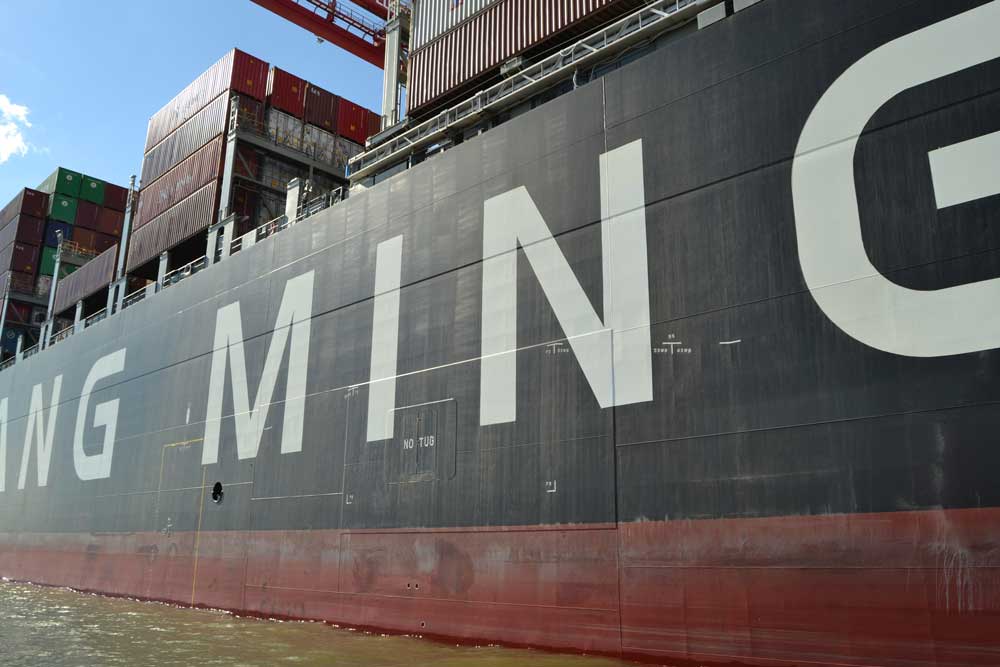The Polish port of Gdansk is satisfied wit[ds_preview]h the year 2016. For this year, the port authority is »relatively optimistic«.
The port says it is difficult to predict, but the forecasts for individual transshipment terminals and operators are relatively optimistic. However, the past year »was long heralded as a special one for the Port of Gdansk, both in terms of the predicted transshipments and the investments carried out, as well as on account of the fact that Gdansk moved up in the ranking of the largest seaports on the Baltic Sea«, it was reported.
»In the meantime, the port has reached a peak, taking sixth position in the Baltic Sea in terms of overall transshipment volumes for the first time.« According to the statement, 2016 was also the fifth year in a row in which the Port of Gdansk consolidated second place in the Baltic basin in terms of container turnover. Initially, in 2012, when Gdansk came second in the ranking for the first time, there was still a gap of 1.6 million TEU between the Polish port and the Port of St. Petersburg, the largest container port in the basin. Meanwhile, in 2015, this disparity decreased to a level of 623,000 TEU, and last year, the difference was only 445,000 TEU.
The DCT container terminal, one of the most important players in the port, already announced a record-breaking year. It is not only the largest container terminal in terms of transshipment volume, but also the largest in the basin in terms of throughput capacity.
During the past year, the Port of Gdansk also considerably increased cooperation with China, which was reflected in two letters of intent signed with some of the largest Chinese seaports – the Port of Qingdao (June 2016) and the Port of Guangzhou (October 2016).
The commodity segment in general was very successful, too, what resulted in another record commodity turnover at the end of the year – at a level of 37.3 million tonnes, i.e. nearly 4% more than in 2015. This time, the largest participation in the port‘s commodity structure belonged to general cargo, while in 2015, it constituted a little over 30% of Gdansk‘s entire cargo volume. Now, its participation increased by as many as 7 percentage points, to a level of 39%, outstripping liquid fuel turnover for the first time in history.
This was mainly triggered by high volumes of container transshipments, which reached a level of 1.3 million TEU, i.e. 19% more than in 2015 and 7.2% more than in the record year 2014. From the point of view of tonnage, the dynamics of container turnover was even higher, and increased by 25% compared to 2015 and by 29% compared to 2014. In total, in 2016, more than 14.5 million tonnes of general cargo was handled on Gdansk‘s quays, i.e. 23% more than in 2015.
Growth and decrease in other cargo segments
- The volume of transshipments in the liquid fuel group was nearly 13 million tonnes, which is a decrease of 13%, but still the third best result in the last decade. »2016 was also an exceptional period, clearly reflecting changes in the transshipments of crude oil. Just a year earlier, the ratio of imported crude oil to exported crude oil was 97% to 3%. Meanwhile, in the past year, that ratio was already 85% to 15%, mainly due to the newly built PERN tanks operating here, which restored exported crude oil transit at the port«, it was said.
- The transshipments of coal have exceeded the level of 5 million tonnes (a 13% increase compared to 2015).
- »Good transshipment results were also achieved in other bulk cargo – a total of 3.5 million tonnes (excluding ore), a growth of 4%.
- A large increase was reported in ore turnover. 200,000 tons reflect a huge increase compared to the 85,000 tonnes of 2015.
- A big decrease of 21 % to 1.15 million tons was announced for cereals
- The transshipment of wheat grew by a 25%
- The export of corn increased by 113%
- The share of exports increased as well, the ratio of export to import was 39% to 61% in 2014 and 2015 but 2016 export transshipments constituted more than 41%.
- While in 2015, the average size of vessels calling at the port was 16,910 GT, in 2016, this increased by another 8%, reaching 18,304 GT. This is an increase in commercial vessel size of 123% within a decade, »and it can be expected that this will continue this year as well.«
















